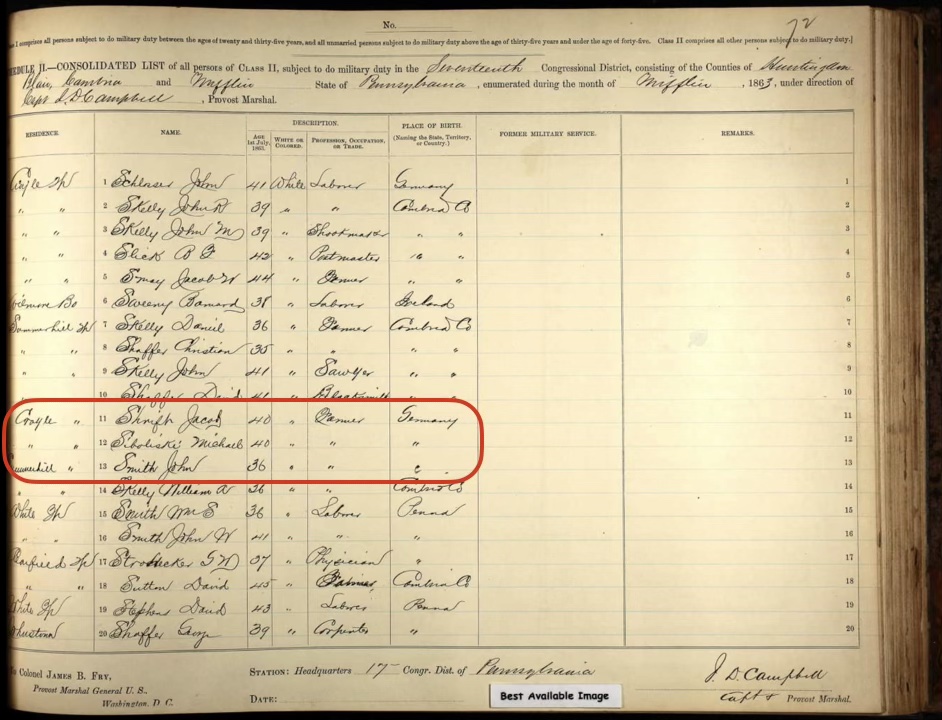Friends and Neighbors in a Time of War
August 1, 2025
Story by Laura, a Schrift and Wuerfel descendant

About two years into the U.S. Civil War, the Union (the North) instituted the country’s first military draft under the Conscription Act of 1863. It required registration by every male U.S. citizen between the ages of 20 and 45 and male immigrants in the same age range who had previously applied for U.S. citizenship.
The Act was controversial for several reasons. For example, it allowed those of means to pay $300 to secure an exemption from service if called up, which many argued meant the law punished poorer families. Others criticized the concept of a national draft because military units came from state-based militias during previous wars and times of conflict. Additionally, numerous immigrants required to register for the draft had already served mandatory military service periods in their country of origin or had left for the U.S., in part, to avoid military service.
Despite the controversies, the Conscription Act of 1863 provides us with an interesting way to peek inside the communities where our ancestors lived. For example, the page above is from the Class II list of registrants from the Seventeenth Congressional District in Pennsylvania, comprised of Blair, Cambria, Huntingdon, and Mifflin Counties.
Class II registrants included married men and the oldest men required to register. According to the Act, these registrants were to be conscripted for service only after Class I registrants were exhausted in their region.
This particular sheet shows a portion of Class II registrations whose surnames started with “S,” including a cluster of three New Germany men (keep in mind that the registrar chose the name spellings): “Shrift, Jacob,” “Siboliski, Michael,” and “Smith, John.”
As shown below, “Warfield, John,” from New Germany is listed later in the registration book. Each of these four men was from Upper Franconia, Bavaria, Germany, and was around the same age (about 36-40 years old). Another close-knit neighbor, Jacob Weinzierl, was older than the registration cut-off age of 45, so he is not included in the draft registration list.

Schrift and Stibolitzky lived on the Croyle Township side of New Germany, and Schmidt (or Smith) and Wuerfel lived in the Summerhill Township portion of the community. This latter duo immigrated on the same ship with their brides-to-be and purchased their New Germany land together.
Over the coming generations, descendants of these four registrants, as well as those of Jacob Weinzierl, would intermarry. Additional families would also be woven into the fabric of the New Germany community as more immigrants arrived and settled in the area after the Civil War ended.
Turning back to the period immediately after the draft registration period, it is not hard to imagine the uneasy conversations among these men and their families as they read the ongoing news about the war. It is no harder to think about the discussions that must have occurred when neighbors met at church or elsewhere in the community, wondering aloud whether any of them would be called to serve.
Ultimately, the Union primarily relied on volunteers through the war’s end. The offered bounties (or bonuses) enticed many men to serve. Others, of course, chose to serve in order to support a cause they believed in.
To our knowledge, none of our four registrants named here served during the Civil War. Do you know otherwise? Do you have any ancestors who served?